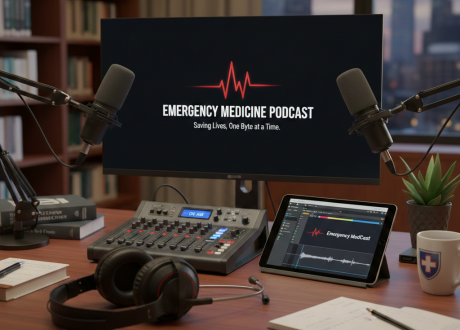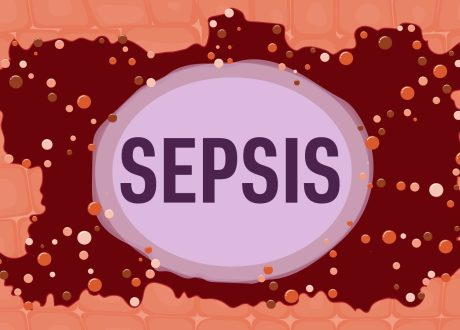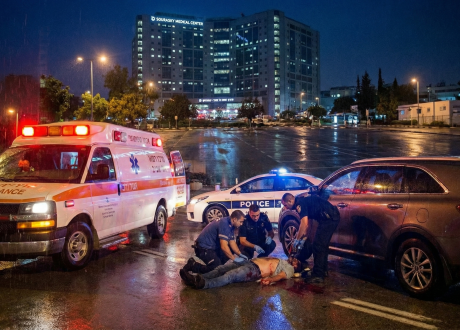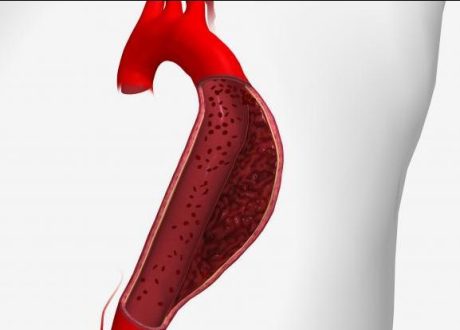Podcast: Play in new window | Download
“This learning material is sourced from Emergency Medicine Cases and has been published here with permission as per creative commons copyright”
In part 1 of this 2-part podcast series on asthma with Dr. Leeor Sommer and Dr. Sameer Mal we covered asthma mimics, risk stratification, ED treatment and who is safe to go home. We drove home that there are many important details in risk stratifying these patients, making sure they are on the right medications, and good discharge instructions to avoid bounce backs and morbidity. In this part 2, we dig into the recognition and management of the crashing asthmatic. We answer such questions as: what are the key elements in recognition of threatening asthma? What are the most time-sensitive interventions required to break the vicious cycle of asthma? What are the best options for dosing and administering magnesium sulphate, epinephrine, fentanyl and ketamine in the management of the crashing asthmatic? What is the role of NIPPV in the management of life-threatening asthma? What are the factors we should consider when it comes to indications for endotracheal intubation of the crashing asthmatic? What role do blood gases play in the decision to intubate? What are the most appropriate ventilation strategies in the intubated asthma patient? and many more…
Podcast production, sound design & editing by Anton Helman; Voice editing by Braedon Paul
Written Summary and blog post by Sara Brade, edited by Anton Helman April, 2024
Cite this podcast as: Helman, A. Sommer, L. Mal, S. The Crashing Asthmatic – Recognition and Management of Life-threatening Asthma. Emergency Medicine Cases. April, 2024. https://emergencymedicinecases.com/crashing-asthmatic-life-threatening-asthma. Accessed April 5, 2024
Recognition of life-threatening, near fatal asthma
- Appearance: Agitated, obtunded, few word dyspnea, accessory muscle use/ tripoding, respiratory arrest
- Vitals: hypoxic, increased (>30) or decreased RR, elevated HR (>120), bradycardia indicative of impending arrest
- Physical exam: silent chest, biphasic wheeze
- Bedside investigations: Peak flow <25% patient’s best (although there is no role for measuring peak flows in the crashing asthmatic)
- Clinical course: Suboptimal/worsening response to initial therapies, fatiguing, decreasing LOC
Overview: Initial approach to management of the crashing asthmatic
Call for help
RNs/ RT/ another emerg doc/ ICU/ anaesthesia
B – C – A
Breathing THEN Circulation THEN Airway
Breathing
- O2 via NP
- Immediate inhaled bronchodilators
- Continuous nebulized salbutamol, up to 15 mg/hr
- Continuous nebulized ipratropium, up to 1.5mg/hr
- IV Methylprednisolone 125 mg
- IV Magnesium sulfate 2 g over 10-15 mins, repeat x3; consider IV fluid bolus before giving magnesium because of hypotension risk and to replace insensible losses from asthma
- Systemic bronchodilators
- IM/IV Epinephrine
- IM: 0.3 to 0.5 mg q 20 mins x 1-2 doses
- IV: ** preferred over IM ** initial 5 mcg/min, titrate up by 1-15 mcg/min every 2-3 mins, dose range: 0.05 to 0.5 mcg/kg/min, down titrate as soon as able
- IM/IV Epinephrine
OR
- IV Salbutamol
- Give after push dose or IM epi as an alternative to IV epi infusion
- IV: initial 2-5 mcg/min, titrate up every 15-30 mins max 20 mcg/min
- For the agitated/ tachypneic patient with severe increased work of breathing: Consider IV ketamine (25-50 mg IV bolus, 0.4-0.5 mg/kg, then 30 min infusion same dose) or IV fentanyl (75-150 mcg IV bolus, 1-2 mcg/kg, titrate to effect) to reduce tachypnea/ agitation/ anxiety and facilitate the use of other treatments/ NIV
Circulation
- Place as many peripheral IVs as possible
- IV crystalloid boluses to compensate for insensible losses and to avoid hypotension caused by magnesium/ hyperinflation
- Reducing respiratory rate/reversing dynamic hyperinflation will improve hemodynamics and increase preload
Airway
- BPAP or CPAP for tachypnea/ increased work of breathing/ hypoxia
- Consider ketamine or fentanyl to facilitate NIPPV in the agitated/ anxious patient
- Use NIPPV to avoid intubation in the obtunded patient who is maintaining airway protection
- Delay intubation if possible as there is a high risk for peri-intubation morbidity and mortality
- Will need intubation if respiratory arrest requiring BVM/ obtunded and not protecting airway
Breaking the vicious cycle of life-threatening asthma
The goal of our interventions is to get the patient out of the “vicious cycle” of severe asthma exacerbations. If tachypnea can be reduced and ventilation improved, the need for intubation can be prevented. In patients who are very tachypneic with severe work of breathing, adjuncts like ketamine or fentanyl can aid in tachypnea reduction and may facilitate improved delivery of bronchodilators/NIPPV.

Source: Internet Book of Critical Care
Medications for the crashing asthmatic / life-threatening asthma




Pitfall: Avoid benzodiazepines. Some evidence suggests increased mortality in severe asthma. Treat the patient’s anxiety by treating their underlying respiratory illness.
Why delay intubation as much as possible in severe asthma?
Dynamic hyperinflation with asthma results in tachypnea, anxiety, poor ventilation, increased intrathoracic pressure, and acidemia. Ultimately, this process leads to respiratory muscle fatigue, hypoxia, and encephalopathy. Intubation is not a solution to the ventilatory problem of asthma. A tube in the trachea actually worsens the underlying pathophysiology by increasing resistance to expiratory flow and by adding more dead space. Intubation is a supportive measure required for selected critically ill patients to buy time for our other treatments to work. Intubation in these patients is a high-risk procedure as they are most often hypoxic, acidotic, and tachypneic. Ventilating these patients is challenging and they are at risk for barotrauma and clinical deterioration.
The role of blood gases in the decision to intubate the patient with life-threatening asthma
Serial blood gas measurements may be helpful in determining a patient’s clinical trajectory. A rising PCO2 over time is a sign that the patient is fatiguing and may be progressing toward respiratory failure.

Early in the exacerbation, the patient’s PCO2 will be low secondary to tachypnea. Over time as the exacerbation becomes more severe and ventilation is compromised, the PCO2 will start to rise. In the “middle” of the exacerbation, the PCO2 will appear in the normal range which can be falsely reassuring.
The blood gas is just one data point that needs to be integrated into the clinical context. The decision to intubate a patient with a severe asthma exacerbation should not be made based on the blood gas alone, but a normal or rising PCO2 should prompt careful clinical assessment for possible impending respiratory failure.
Ventilation strategies for the crashing asthmatic – indications and cautions
- Non-Invasive-Positive-Pressure-Ventilation (NIPPV) should be considered in patients with an elevated respiratory rate (>high 20s) and increased work of breathing
- CPAP or BPAP is preferred over HFNC, and CPAP is preferred over BPAP for patients with especially high respiratory rates who are unable to trigger the BPAP adequately due to the short inspiration phase
- Consider ketamine or fentanyl to facilitate the use of NIPPV
- Endotracheal intubation should be the last resort ventilation strategy
- Intubation is generally required for patients presenting with, or who have progressed to, respiratory arrest/ severely obtunded requiring BVM/ not protecting airway
- If endotracheal intubation is necessary, minimize the apneic period and use an obstructive ventilation strategy to avoid hyperinflation
The following tables include indications for and cautions using CPAP, BPAP, HFNC, endotracheal intubation and ventilation settings.


Rapid Sequence Intubation (RSI) pearls in the crashing asthmatic
- Have an epinephrine infusion ready to run (or push dose epinephrine drawn up) before intubation as hypotension is likely to occur when intubating the crashing asthmatic, as epinephrine is an ideal drug to correct hypotension in this scenario.
- Allow the patient to sit upright for as long as possible during the peri-intubation period to allow for best possible ventilation
- When performing endotracheal intubation in the crashing asthmatic, during the shortest possible apneic period, have the patient maintained on nasal prongs at 15L and avoid BVM whenever possible
- A long expiration time is necessary to prevent dynamic hyperinflation
- Allow permissive hypercapnia and permissive acidemia along with an obstructive ventilation settings strategy as outline in the above table
Stepwise approach to the crashing intubated asthmatic – DOPES mnemonic
Peri-intubation complication rate in this situation is very high. We need a checklist approach to ensure thorough evaluation and management in this case. You can use the DOPES mnemonic to guide this assessment. Have a partner perform this checklist with you to ensure no errors are made.
1.D: Is the tube Dislodged?
- Put the VL in the mouth and visualize the tube. Make sure the cuff hasn’t herniated, make sure the tube is in the trachea. Reposition tube if dislodged.
- Reassess for clinical improvement.
2.O: Is the tube Obstructed?
- Pass a suction catheter through the tube and suction.
- Reassess for clinical improvement.
3.P: Is there a Pneumothorax?
- Look for asymmetric chest excursion, auscultate the lungs, palpated for crepitus, POCUS for pneumothorax.
- Manage pneumothorax, if present.
- Reassess for clinical improvement.
4.E: Is there a problem with the Equipment/circuit?
- Disconnect the vent, inspect and test each part of the circuit (ie. tubing, O2 supply, PEEP valve, all connections). Ensure no breaches in the circuit.
- Replace any faulty part, if found.
- Reassess for clinical improvement.
5.S: Is there breath Stacking?
- Optimize vent settings.
- Disconnect from vent and “bear hug”/ forced exhalation, then reconnect.
- Reassess for clinical improvement.
Advanced therapies for the intubated asthmatic who is not improving
Options include:
- Optimizing ventilator settings with assistance from your ICU colleagues
- Involving anaesthesia to trial inhaled anaesthetic gases
- ECMO for refractory acidemia/ hypoxia.
For further learning on the crashing asthmatic, watch Dr. Mike Betzner in his talk from EMU on the crashing asthmatic
Life Threatening Asthma EM Cases Algorithm









